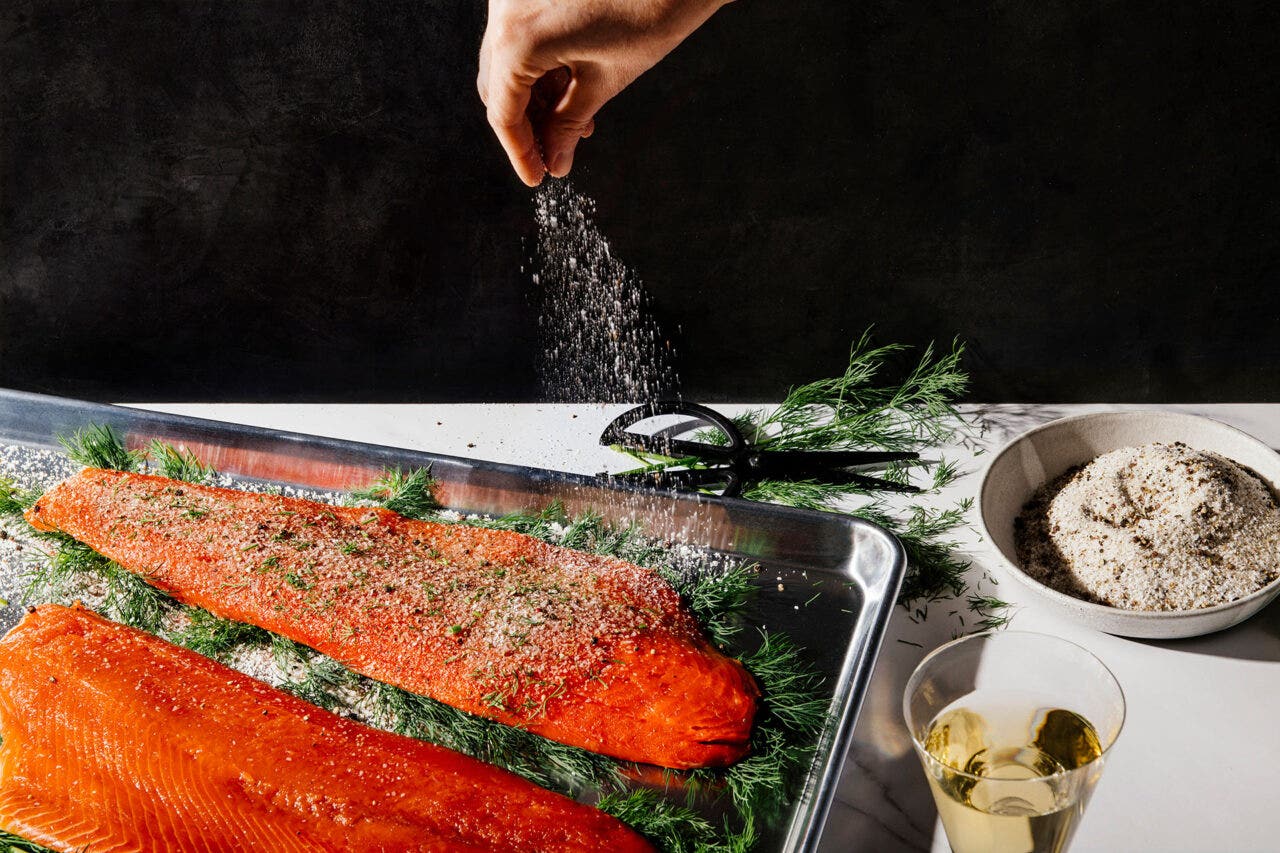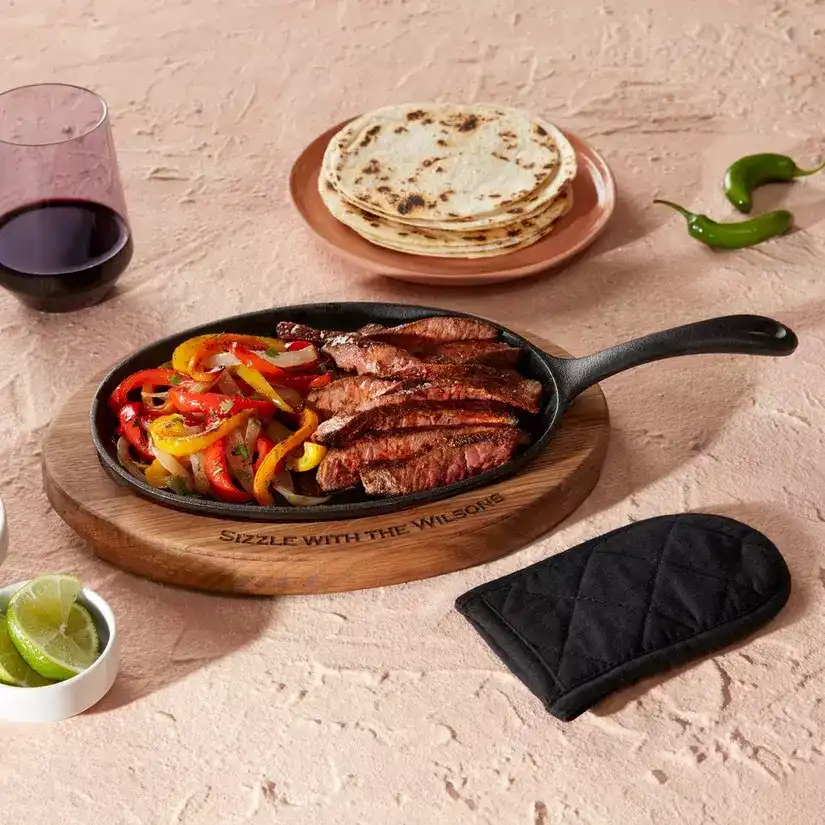With so much impact for so little effort (and without having to schlep to Russ & Daughters), gravlax deserves a place in your entertaining arsenal. Lox and gravlax both refer to salt-cured (not smoked) salmon, but the latter usually adds sugar and herbs to the curing mixture. To retain some of the fresh salmon’s texture and flavor, our recipe uses a shorter cure time than most. Multiple smaller salmon fillets work fine here, but try to get one piece of salmon for the best presentation (if using a side of salmon, which usually weighs between 3 and 4 pounds, simply double the other ingredients). Skinless salmon allows for a more even cure, but skin-on salmon leaves you with a bonus: After slicing the gravlax, the skin can be fried crisp in hot oil as a garnish or just a treat for the chef.
You May Also Like: What Wine Pairs with Salmon?
Gravlax Recipe
Ingredients
- 2 lbs. center-cut boneless salmon fillet, skinless or skin-on
- ½ cup kosher salt
- ½ cup granulated sugar
- 1 tablespoon peppercorns, cracked if desired
- ¼ packed cup minced fresh dill, plus two bunches fresh dill
Instructions
Rinse salmon and pat dry. Run clean fingers over salmon to check for pin bones, and remove any with needlenose pliers (ask your fish market to do this if they haven’t already). Combine salt, sugar, peppercorns and 1/4 cup dill, and pack onto both sides of salmon. Lay one bunch of dill in a glass or ceramic baking dish (approximately the size of the salmon fillet), cover with salmon, then top with the other bunch of dill, making sure every surface of the salmon is covered by some of the salt mixture.
Cover loosely with plastic wrap and place some weights on top (canned food works fine). Refrigerate for 18 to 24 hours, flipping salmon once partway through (if salmon is less than 1.5 inches thick or more than 2 inches thick, reduce or raise curing time by a few hours). Brush salt mixture from salmon and remove the remainder with a moist paper towel. Serve immediately, or wrap tightly in plastic and refrigerate for up to 5 days.
To serve, transfer gravlax to a serving platter and slice thinly on the diagonal with a very sharp long knife.
The two most common kosher salts, Morton’s and Diamond Crystal, vary widely in density. While exact amounts of salt and sugar aren’t ultraimportant here, this recipe assumes Morton’s; if using Diamond Crystal, use 3/4 cup.
Any type of salmon can be used for gravlax, but chinook (aka king), Atlantic and sockeye salmon are fattier than coho (aka Silver) and pink salmon, making for a more buttery and flavorful gravlax. For a change of pace, try boneless halibut fillets.
To Top: Mustard Sauce
This is a traditional Scandinavian accompaniment for cured salmon. Whisk together 1/4 cup Dijon mustard, 3 tablespoons white wine vinegar, 1 tablespoon mayonnaise, 1 tablespoon honey and 2 tablespoons minced fresh dill. Slowly whisk in 1/4 cup extra-virgin olive or vegetable oil.
Wine Pairing
Gravlax goes equally well with cream cheese and citrus vinaigrette, so it follows that oaked Chardonnay, with its blend of crisp acidity and rich texture, is an ideal pairing. American oak, in particular, gives complementary hints of dill and smoke. Just be sure to pick an example where the oak treatment is gentle, so it doesn’t lose its intrinsic brightness.
Try: Ridge 2021 Estate Chardonnay (Santa Cruz Mountains)
This article originally appeared in the May 2024 of Wine Enthusiast magazine.

Bring the World of Wine to Your Doorstep
Subscribe to Wine Enthusiast Magazine now and get 1 year for $70 $29.99.
Published: May 10, 2024






